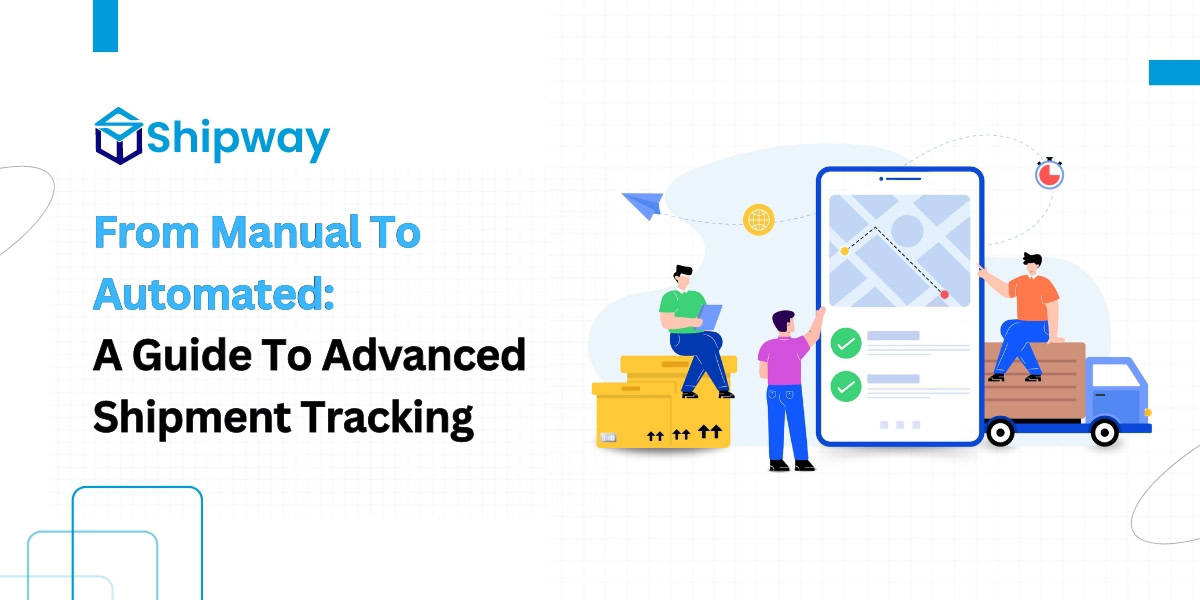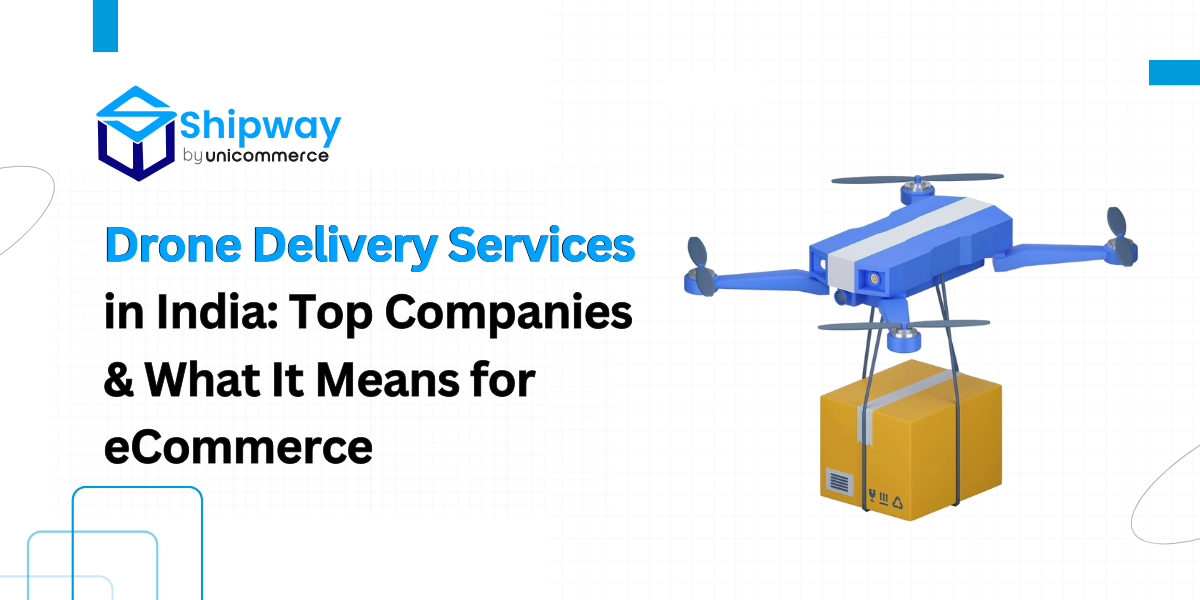Managing shipments across multiple stores and platforms can be daunting and time-consuming. Tracking shipment statuses across various carriers becomes complex, especially with large teams involved.
Traditionally, shipment management meant checking individual carrier websites or organizing shipments in Excel and updating them manually. Some carriers offer dedicated portals, but handling multiple carriers complicates matters.
While eCommerce platforms like Shopify provide built-in tracking functions, they often support only a limited number of carriers. This leaves retailers managing unsupported carriers manually, particularly problematic for large retailers with multiple stores.
The solution lies in all-in-one shipment tracking software. Integrated with numerous carriers and platforms, this software simplifies order management by centralizing all shipments and orders in one place. Let’s delve into how it streamlines operations.
What is Automated Shipment Tracking?
Automated shipment tracking involves leveraging shipping software, tool tracking software for businesses or logistics aggregators to minimize manual tasks and enhance operational efficiency. These order and tool tracking software can monitor hundreds of parcels or tools simultaneously and promptly transmit delivery updates to both customers and businesses.
Particularly valuable for medium and large eCommerce enterprises, real-time tracking is an indispensable feature that ensures transparency and customer satisfaction.
Additionally, shipping and tracking automation systems like Shipway Xperience assist in various other functions, such as measuring customer satisfaction scores, cross-selling & upselling with product recommendations and simplifying and automating returns and exchanges.
Top 4 Advantages of Automated Shipment Tracking Systems
Automated shipment tracking significantly reduces human errors and labor costs. This makes it an invaluable tool to improve the overall customer shipping experience and business operations.
Here are some of the key benefits:
1. Real-Time Visibility
Real-time shipment monitoring is crucial for providing an excellent customer experience. Automated tracking systems follow carrier movements, displaying the latest order status on tracking portals.
This transparency helps the customers and businesses set their expectations for the right delivery times and helps businesses manage any shipment delay with ease.
Further, these trackers also send automatic order status updates via WhatsApp, Email and SMS to the customer and improve the trust and satisfaction score.
2. Resource Optimization
Automated tracking systems optimize resource use by efficiently filling delivery fleets and arranging consignments according to planned routes. This leads to faster deliveries, fewer trips, and reduced logistics costs. These systems also enable you to identify the best courier for order fulfillment based on performance, serviceable locations, and shipping costs. This will ensure cost-effective and timely deliveries.
3. Lower Operational Costs and Greater Efficiency
The automated courier tracking process enhances efficiency at every step. With seamless carrier adoption and integrations with top courier aggregators, you can optimize your courier selection process. Furthermore, automated order tracking reduces errors, minimizing failed deliveries and increasing overall process efficiency.
This lowers the order status queries saving time and operational costs. Further, employees can focus on other critical areas like planning, customer support, sales, and management.
4. Reduced WISMO Calls and Support Tickets
Automated tracking solutions closely monitor the movement of goods within the supply chain. This helps the business to keep updated on items in transit, delayed orders, lost shipments, and undelivered parcels.
This useful approach allows businesses to address issues before customers start making WISMO (Where Is My Order) calls. Transparent order status information enables e-commerce companies to inform customers of updated delivery dates in case of delays, enhancing customer satisfaction and encouraging repeat business.
Key Features of Automated Shipment Tracking
The effectiveness of shipment tracking solutions relies on advanced technologies. Here are some key features:
1. GPS Technology
GPS tracking provides real-time status updates for packages in transit, allowing businesses to monitor fleet movements, including engine start-stop, routes, and fuel efficiency. After using live traffic data, GPS technology can alert drivers to roadblocks, weather conditions, and the shortest routes to their destinations.
2. Sensor Technology (RFID and Barcoding)
Sensor technology, through RFID tags or barcodes, enables precise location tracking of shipments. Data from these sensors can be collated on a centralized platform, providing detailed information about items, such as their temperature and condition.
3. Estimated Delivery Date Projection
Many automated tracking systems feature estimated delivery date (EDD) projections. Displayed on product and checkout pages, EDDs help manage customer expectations by allowing them to check delivery times based on their PIN or zip codes.
Tips to Choose the Best Automated Shipment Tracking System
In eCommerce, automated tracking systems provide businesses with key solutions to grow online. They do this without worrying about missed shipments or delays.
However, the services offered by these systems can vary significantly. Therefore, it’s crucial for businesses to carefully evaluate the features of each solution. Here are some key characteristics to consider:
1. Centralized Tracking
A centralized order tracking system allows brands to monitor orders across websites, storefronts, and marketplaces from a single dashboard. This feature enables entrepreneurs to filter through orders to identify shipments that are delayed, in transit, or returned. It also displays payment and refund statuses, streamlining the tracking process.
2. Easy Integration with Existing Systems
Businesses often depend on multiple tech stacks like CRMs, ERPs, WMS, and OMS to run an ecommerce store successfully. As a result, it is important to choose an automated order-tracking system that integrates with these existing systems. The new software should complement, not disrupt, the current operations or cause downtimes.
3. Multi-Carrier Support
Most ecommerce companies use various courier delivery partners for international and domestic orders. Therefore, the chosen tracking system must support multiple carriers. The best solutions leverage carrier APIs to provide real-time package tracking notifications, ensuring comprehensive visibility across all shipments.
4. Customizable Features
Online stores have diverse needs, so the courier tracking solution should offer customizable features. Common customizations include customer notifications. For instance, sellers might want to notify customers about their shipment status via channels like WhatsApp, Email, and SMS.
5. Branded Tracking
Branded tracking enhances customer experience by maintaining brand continuity throughout the shopping and post-purchase phases. Shoppers are redirected to a tracking page that mirrors the brand’s logo, color scheme, and lettering. This helps them in driving the additional sales via upselling and cross-selling.
6. Proof of Delivery
A digital proof of delivery (POD) is increasingly important as ecommerce fraud and theft rise. POD ensures businesses are notified when an order is fulfilled and often includes the receiver’s name.
In regions like the United States, where curbside and doorstep deliveries are common, digital PODs are essential for confirming deliveries. It’s crucial to select a tracking solution that partners with carriers offering this benefit.
7. Hassle-Free Onboarding
Finally, the shipping solution must provide a smooth onboarding process for the end eCommerce company. This means a shipment tracking platform should need to be properly set up for proper use of it.
An easy-to-use software onboarding process means that the onboarding software for the shipping solution is simple to use, allowing online businesses to start shipping and tracking their packages. The interface of the onboarding software should be user-friendly and free from any error.
Empower Your Brand with Shipway’s Automated Order Tracking System
Shipway Xperience is a top-notch post-purchase and order-tracking platform that provides brands with the convenience of monitoring all their orders from a single unified dashboard. This powerful tool allows merchants to merge, cancel, and track multiple shipments with just one click, simplifying the entire logistics process.
The tracking solution also features a branded tracking page, customizable by store owners to boost brand engagement and drive sales. Using the help of different types of tracking API, Shipway provides real-time customer order tracking and sends regular updates to the customer via different channels like emails, Whatsapp, and SMS.
Conclusion
At last, automated order tracking has become one of the most preferred methods for the majority of eCommerce companies due to its different benefits like cost saving, accuracy, time, and improved customer satisfaction. With the advancement in new-age technologies like AI, data science, IoT, and blockchain, the future of automated tracking of shipments looks good.
Today monitoring of online shipments has become essential for efficient logistics operations and reducing the associated operational costs, etc. Further, the functionalities of shipping and tracking automation solutions extend beyond real-time tracking. Now, it consists of important tasks like generating shipping and return labels, managing delays or exceptions, and implementing data-driven strategies for on-ground fleet management.
Shipway Xperience offers a comprehensive order-tracking solution that leverages these advanced technologies to optimize your logistics operations. Enhance your eCommerce business with Shipway Xperience, ensuring seamless tracking, improved efficiency, and exceptional customer satisfaction.
You may also like...
Fix Shipping Weight Errors with These Proven Tools
If you run an ecommerce business, you already know how important it is to get the shipping weight right. The weight you record for your products...
read moreTop Shipping KPIs & Metrics Ecommerce Brands Should Track in 2025
In ecommerce, fast and smooth delivery can make or break your business. Customers don’t just want good products, they want them on time, in perfect...
read moreDrone Delivery Services in India: Top Companies & What It Means for eCommerce
Imagine ordering groceries, medicines, or even your favorite snacks and getting them delivered by a flying drone in under 10 minutes. Sounds...
read more






